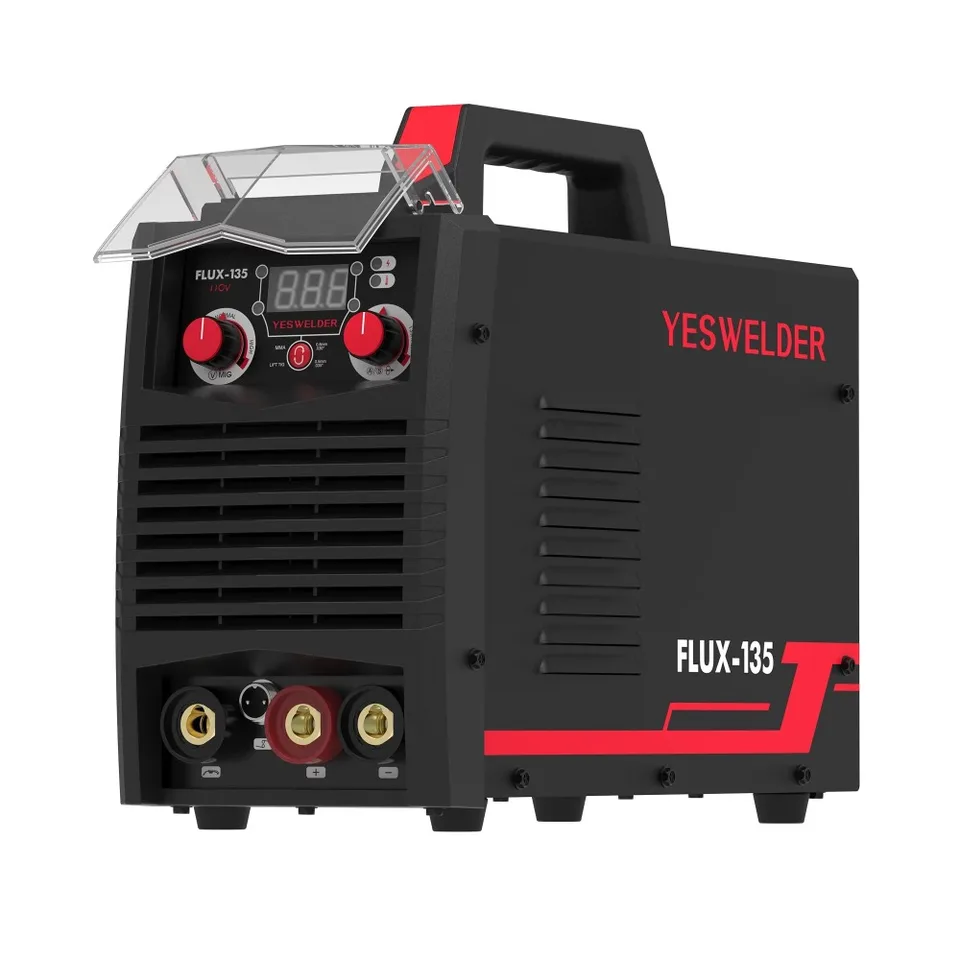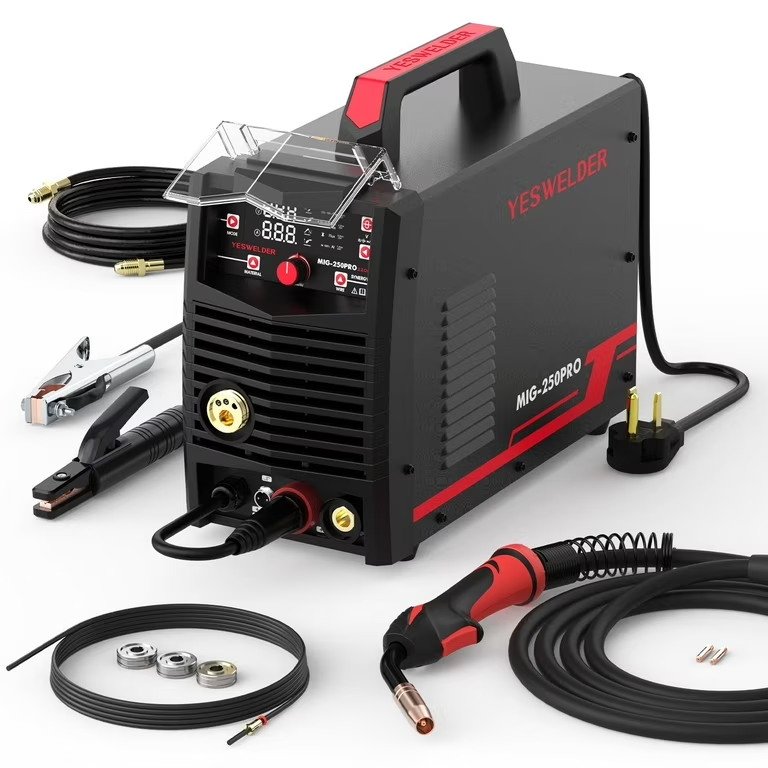The Power of a Welding Machine: An Essential Tool in Modern Fabrication
Welding machines play a crucial role in various industries. They are indispensable in construction, automotive, and manufacturing sectors. A welding machine creates strong joints by melting materials together. This process not only ensures durability but also enhances the structural integrity of the finished product. Therefore, understanding the significance of welding machines is vital for anyone involved in metalwork or fabrication.
Welding machines are crucial tools for metal fabrication. They help join materials together efficiently. Understanding these machines can significantly impact welding projects. This blog will explore various aspects of welding machines. It will examine types, uses, and maintenance methods.
Welding machines come in several types. Each type serves a specific purpose in welding projects. The most common types include MIG, TIG, and Stick welding machines. MIG stands for Metal Inert Gas welding. This process is popular for its speed and efficiency. Welders widely use this method in construction and manufacturing.

Types of Welding Machines: A Comprehensive Overview
Several types of welding machines exist, each with unique capabilities. The most common ones include MIG, TIG, and Stick welding machines. MIG welding machines, or Metal Inert Gas machines, are popular for their speed and ease of use. They are ideal for beginners as they provide a smooth and continuous feed of filler material.
In contrast, TIG welding machines, or Tungsten Inert Gas machines, offer precise welding. These machines are perfect for thin materials and require a higher skill level. They use a non-consumable tungsten electrode to produce the weld. Meanwhile, Stick welding machines are versatile and can be used in various environments. They are excellent for outdoor projects, as they are less affected by wind and contaminants.
Transitioning between different types of welding requires knowledge of their specifications and usage. Therefore, selecting the right welding machine is crucial to achieving desired results. Moreover, each welding type has specific safety measures that users must follow. Understanding these machines can lead to better quality welds.
Essential Features of Quality Welding Machines
Quality welding machines come with several important features. First, adjustable amperage settings allow users to control the heat of the weld. This feature is vital for different materials and thicknesses. Next, built-in safety mechanisms enhance user protection. These mechanisms can include overheating protection and automatic shut-off capabilities.
Another important feature is portability. Many modern welding machines are designed to be lightweight and easy to transport. This aspect is particularly beneficial for mobile welding jobs. Users can easily carry these machines to various sites without hassle.
Furthermore, some welding machines offer digital displays. These displays provide real-time information on power settings and performance metrics. Digital interfaces can significantly enhance user experience. They make it easier to understand and control the welding process.
In summary, quality welding machines should offer a combination of features that enhance usability and safety. Investing in a reliable machine can lead to improved efficiency. Therefore, potential buyers should consider these important factors before making a purchase decision.

Cost Considerations: Finding the Right Welding Machine for Your Budget
Choosing a welding machine involves more than just features. Cost is an essential factor that influences purchasing decisions. Prices of welding machines can vary significantly. Factors that affect cost include brand, type, and specifications. For beginners, entry-level MIG welding machines are often the most affordable option.
However, investing in more advanced machines may be necessary for professional use. High-end TIG welders offer enhanced precision and can cost more. Advanced machines often come with additional features that justify the higher price.
Beyond the initial purchase price, operational costs also matter. Consumables, such as welding wire and gas, can add to overall expenses. Regular maintenance is another cost consideration. Ensuring that machines function efficiently requires routine check-ups and occasional repairs.
In essence, understanding the entire economic picture is vital. Buyers should consider not only the initial price but also the long-term costs. Making an informed decision can lead to successful project outcomes and financial savings.
Safety First: Best Practices for Welding Machine Operation
Safety should always be a top priority when using a welding machine. Proper training and adherence to safety protocols minimize risks. Wearing the appropriate personal protective equipment (PPE) is essential. This includes gloves, helmets, and protective clothing to safeguard against sparks and UV rays.
Additionally, the workspace must be free of flammable materials. Proper ventilation is crucial as welding produces harmful fumes. Users should ensure that they work in an area with adequate airflow. Employing exhaust systems can further reduce exposure to fumes.
Another best practice is to conduct regular equipment inspections. Checking hoses, cables, and connections ensures everything is in good working order. Identifying wear and tear can prevent accidents before they occur.
Moreover, knowing how to react in emergencies is vital. Users should be familiar with fire extinguishers and readily accessible first-aid kits. In case of an injury, having a plan in place will help ensure a swift response.
To conclude, safety practices are non-negotiable when operating welding machines. A comprehensive safety approach protects users and enhances overall productivity.

Maintenance Tips for Prolonging the Life of Welding Machines
Routine maintenance is key to ensuring a welding machine’s longevity. Regularly cleaning the machine prevents the accumulation of debris and contaminants. Dust and residue can obstruct ventilation and lead to overheating.
Furthermore, checking and replacing consumables as needed is vital. Monitoring the gas levels and replacing welding wire when low will ensure uninterrupted work. Users should store these materials properly to avoid oxidation and damage.
The electrical components also require attention. Checking connections and cables for wear can prevent electrical failures. Any damaged parts should be replaced immediately to maintain safety.
It’s also wise to consult the manufacturer’s guidelines for specific maintenance recommendations. Following these suggestions can greatly extend the life of the welding machine.
In summary, proactive maintenance practices will enhance reliability. Investing time in regular upkeep maximizes the machine’s performance and durability.
The Future of Welding Machines: Embracing Advanced Technology
The welding industry is evolving rapidly due to technological advancements. New welding machines are integrating smart features that enhance user experience. For example, some machines now include Wi-Fi connectivity for remote monitoring and management.
Moreover, automation is becoming more common in welding. Robotic welding systems are increasingly popular for their speed and efficiency. These machines minimize human error, ensuring consistent results.
Artificial Intelligence (AI) is also making its way into welding technology. AI-driven machines can learn from each weld, optimizing parameters for better performance. This innovation can greatly reduce waste and improve overall productivity.
Furthermore, advancements in materials science are influencing machine design. Manufacturers are exploring lighter and more durable materials for building welding machines. These improvements enhance portability without sacrificing performance.
In conclusion, the future of welding machines looks promising. Embracing these technological trends can lead to better efficiency and effectiveness in various applications.

Training: Essential Skills for Operating Welding Machines
Effective training is essential for anyone operating a welding machine. Learning the basics of welding techniques can significantly improve results. Proper education can also enhance safety awareness, reducing the risk of accidents.
Many organizations offer welding courses that cover essential topics. These courses typically include hands-on training, allowing individuals to practice in a controlled setting. Experienced instructors can provide valuable insights into various welding techniques.
Additionally, online resources and tutorials can supplement formal training. There are numerous videos and articles available that detail different welding processes. These resources can help reinforce classroom learning and provide additional tips.
Moreover, obtaining certification can enhance job prospects. Many employers prefer candidates with recognized certifications in welding. This credential signifies a commitment to safety and professionalism in the field.
Overall, adequate training equips individuals with the necessary skills to operate welding machines successfully. A well-trained workforce leads to higher quality work and increased project success rates.
Conclusion: The Integral Role of Welding Machines in Modern Industry
Welding machines are vital tools in today’s industrial landscape. They facilitate the joining of metals and contribute to producing high-quality products. Understanding the different types of welding machines is essential for selecting the right one for specific applications.
Moreover, safety practices must be prioritized when operating these machines. Users should implement maintenance routines to ensure optimal performance and longevity. As technology continues to evolve, staying informed about advancements is crucial for success in this field.
Investing in proper training enhances skills and increases safety awareness. Ultimately, welding machines play an integral role in achieving efficient fabrication processes. By embracing best practices, industry professionals can maximize their potential in this critical domain.








